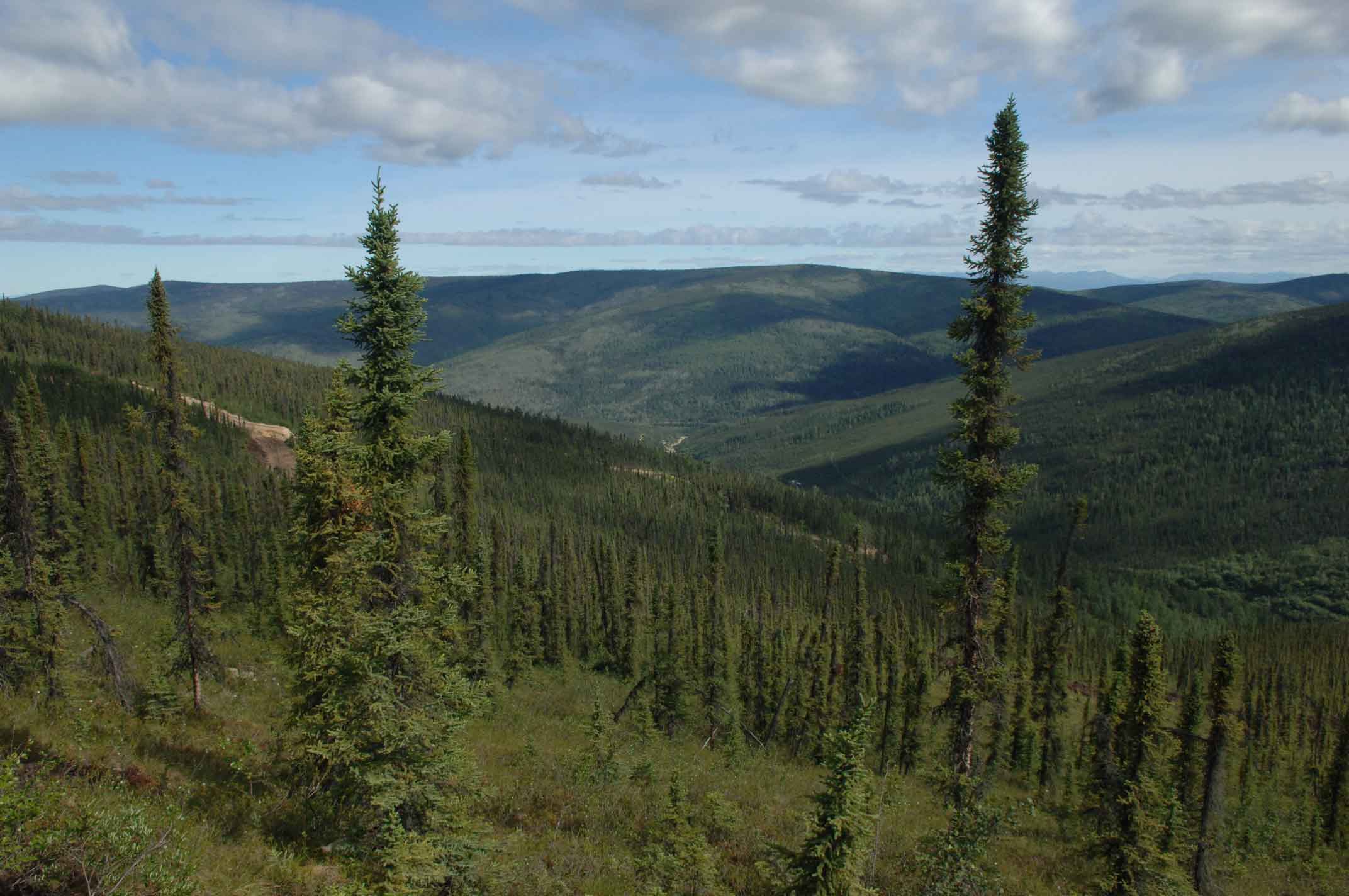Associate Professor
Ecosystem Science and Management Program

| • Home • Research • Publications • Courses • Photo Galleries • Graduate Opportunities |
Paul Sanborn Associate Professor Ecosystem Science and Management Program |
 |
Unlike most of Canada, much of the western portion of the Yukon Territory was never glaciated, or was covered by only the earliest glaciations more than 2 million years ago. This history gives us an opportunity to study soil landscapes with no equivalents elsewhere in the country.
In the unglaciated Klondike Plateau, soils have formed predominantly in colluvium derived from weathered bedrock, perhaps with additional contributions of aeolian deposits. (More information is available in a recent Yukon Geological Survey Open File Report.)
The placer mines of the Klondike Goldfields have exposed a remarkable record of past environments in the frozen “muck” that overlies gold-bearing gravels. In addition to many well-preserved plant and animal fossils, these sediments contain numerous ancient soils (paleosols) that formed during the cold climates of past ice ages. These sequences contain many identifiable layers of volcanic ash that can be used as time markers that extend beyond the limits of radiocarbon dating.
The composite picture below shows a sequence of sediments and paleosols from the Christie Mine at Dominion Creek. More details on this site and its significance are available in a recent paper.
In the central Yukon, the earlier Pliocene and Pleistocene glaciations were more extensive than the most recent glaciation. Deposits from these various ice ages span an age range exceeding 2 million years, and the soils formed on these land surfaces display corresponding differences in their morphology and properties. These relationships were documented across much of the central Yukon in the 1980s by soil scientists Charles Tarnocai and Scott Smith (Agriculture & Agri-Food Canada), who worked with the late Owen Hughes and other members of the Geological Survey of Canada. Surprisingly little follow-up work has been done since then, and some important questions remain. I am particularly interested in understanding the contribution that weathering of aeolian materials has made to the properties of soils on the older glacial surfaces.
.jpg)
.jpg)
.jpg)
One of the most unusual Yukon landscapes occurs at the terminus of the Klutlan Glacier where a thick accumulation (> 1 m) of the ~ 1200 BP White River tephra was deposited on stagnant glacier ice. Although a white spruce forest has become established on the tephra, continued melting of the underlying ice leads to frequent slumping and disturbance of these young soils.